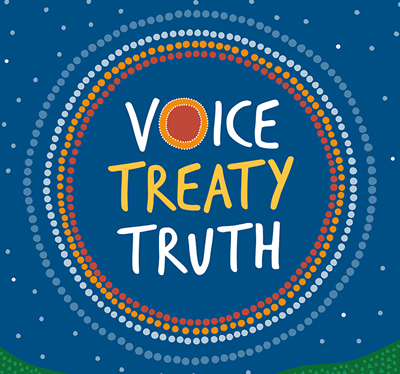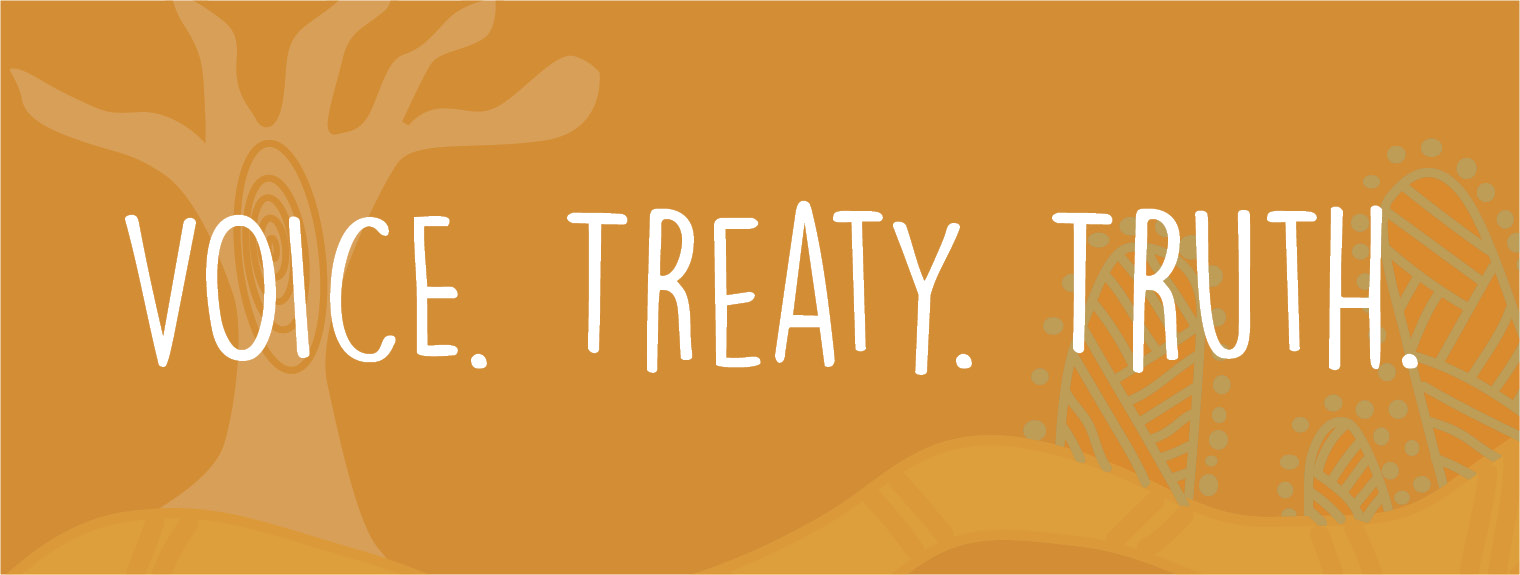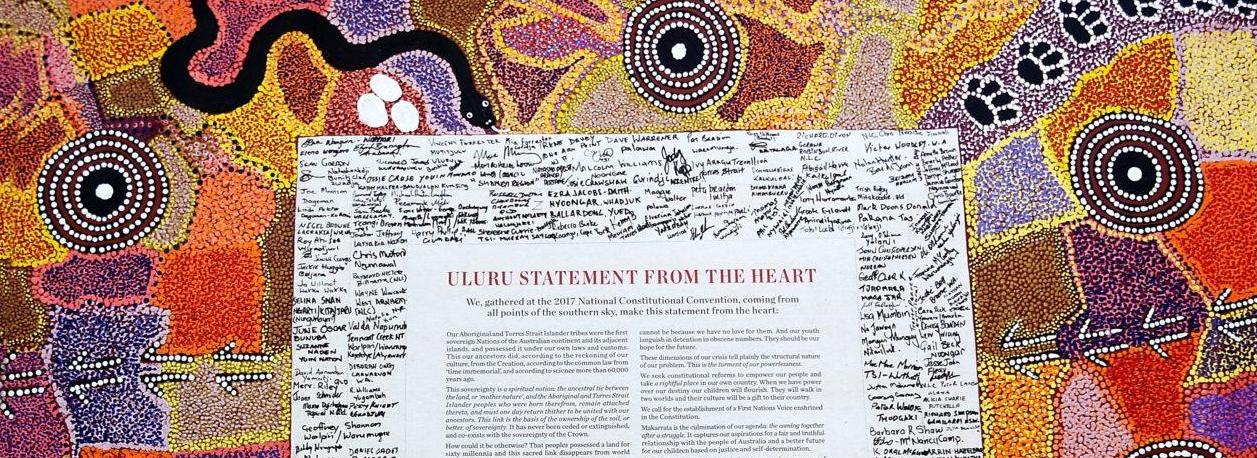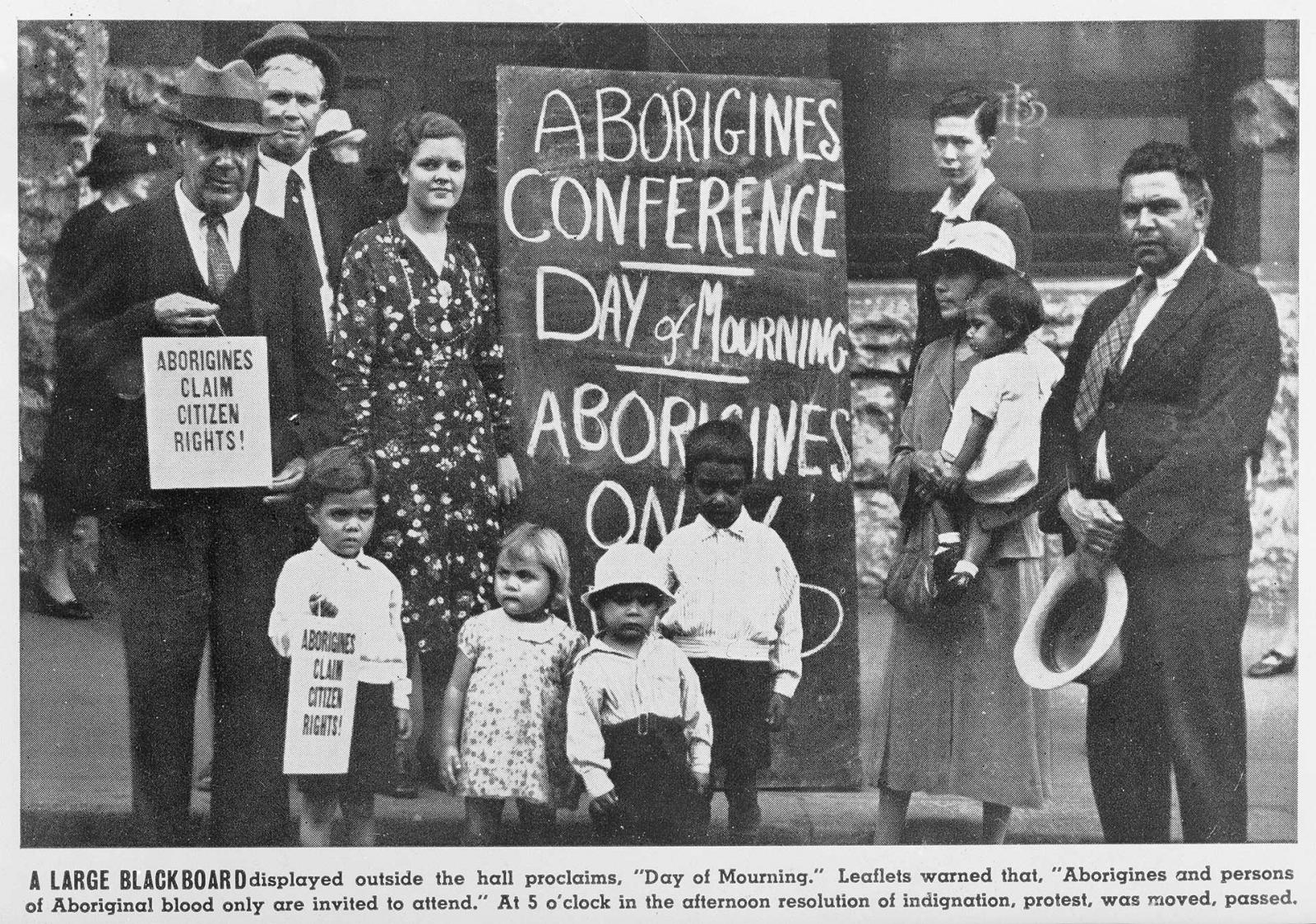The theme is about recognising Aboriginal and Torres Strait Islander peoples place in this country and in history.
To celebrate NAIDOC week, Deadly Story is showcasing different perspectives on the 2019 NAIDOC theme “Voice, Treaty, Truth.” We recognise that there is huge diversity of views within the Victorian Aboriginal Community and while we have not captured them all, we seek to provide a platform for discussing these important topics.

LINK: Voice, Treaty, Truth - Community Perspectives
Voice, Treaty, Truth – NAIDOC 2019 theme
Each year, NAIDOC celebrations have a different theme. The theme for 2019 is Voice. Treaty. Truth. Let’s work together for a shared future.
The theme is about recognising Aboriginal and Torres Strait Islander peoples place in this country and in history. These three elements are key parts of reforms recommended in the Uluru Statement from the Heart, which was signed by over 200 delegates at the 2017 First Nations Constitutional Convention. The statement outlines a need for an Aboriginal voice to Parliament that would be written into the constitution by referendum, and a Makarrata Commission that would supervise truth-telling and Treaty processes (see below for more information).
This theme brings together key issues that Aboriginal people have been fighting for since colonisation began in 1788. It also looks to spark important conversations about how as Aboriginal people we can have more say and control over our lives and how the continuing injustices of colonisation can be addressed. The theme is also about celebrating our languages, with 2019 being the United Nations International Year of Indigenous Languages.
You can read about the 2019 NAIDOC theme here.


Key parts of the theme are:
Voice
Before colonisation, Aboriginal people had complete control over our lives and were able to express our worldview and voice in language. Since 1788, our voices have been silenced and we have not been able to have a say in our lives and in Australian democracy. This year’s NAIDOC theme is looking to spark discussion about what it means for Aboriginal people to have a ‘voice’ in modern society and how this voice can be amplified and heard.
Treaty
One way that Aboriginal and Torres Strait Islander people have been fighting for self-determination is through treaty. A treaty is a binding agreement that is negotiated between different groups or parties, for example Aboriginal and Torres Strait Islander people and the Australian Government. A treaty is created to show that each group has reached an agreement about duties and responsibilities around sharing land and resources and governing together. Unlike the USA, Canada or New Zealand, there has never been a treaty in Australia. Read more about treaties in other countries.
A treaty can include many different things. It might:
- Recognise Aboriginal and Torres Strait Islander self-determination and sovereignty.
- Guarantee self-determination and land rights for Aboriginal people.
- Acknowledge the harm and pain caused by colonisation.
- Offer reparations or redress for harm to Aboriginal people and Communities.
A treaty could take a number of different forms: there could be one for each mob or one at a state or national level; it could be with the national Government or with states or territories. Aboriginal and Torres Strait Islander people have been fighting for a treaty for decades.
The word ‘treaty’ means a lot of different things to different people. Currently there are many discussions in the Community about treaty in Victoria and nationally.
Truth
Much of the history and current experiences of the Aboriginal Community are not known or recognised by the broader Australian public. This is because key parts of our history and the reality of colonisation have been deliberately hidden and our voices have been silenced.
‘Truth telling’ is about bringing to light our stories, histories and experiences and having them be publicly acknowledged. One example would be recognising the sophistication of Aboriginal land management and farming techniques that were used to protect Country. Another is acknowledging the reality of the devastating and continuing impacts of invasion.


What is the Uluru Statement from the Heart?
The 2019 NAIDOC theme seeks to highlight the Uluru Statement from the Heart. In May 2017, Aboriginal and Torres Strait Islander leaders from across Australia gathered at Uluru to consider and discuss the issue of recognising Aboriginal and Torres Strait Islander people in the Australian Constitution. A statement released after the meeting stated the majority of delegates didn’t agree with having only symbolic recognition in the Constitution.
Instead, they called for a representative body for Aboriginal and Torres Strait Islander peoples to be created and included in the Constitution and for a ‘Makarrata’ Commission to oversee a treaty and truth telling process. Makaratta is a word from the language of the Yolngu people from Arnhem Land in the Northern Territory. It is a complex term that refers to a process of conflict resolution, peacemaking and justice.
Following its release, the Turnbull and then Morrison governments have stated they will not accept the recommendations of Uluru Statement. Many Aboriginal and Torres Strait Islander people are continuing to fight for the recommendations of the Uluru Statement to be implemented.
Learn more about the Uluru statement through the following resources:
- 1 Voice Uluru
- Referendum Council
- What is the Uluru Statement from the Heart?, Sydney Morning Herald
- What is a Makarrata? The Yolngu word is more than a synonym for treaty, Luke Pearson, ABC News.
Resources
SBS has created school resources for primary and secondary students about NAIDOC and the 2019 theme. You can access the resource packs at the links below:
Other resources for NAIDOC week include:


History of NAIDOC
NAIDOC week traces its history back to the 1920s and the strong Aboriginal leaders from that period. At this time, our mob were resisting colonisation and discrimination using new tactics, including forming organisations, protests and marches, petitions and boycotts.
An important protest at this time was the 1938 Day of Mourning, organised by the Aboriginal Progressive Association (APA) of New South Wales with the support of the Aboriginal Advancement League in Victoria. On the 26th of January that year, many non-Aboriginal people were celebrating the 150th anniversary of the arrival of Europeans in Australia. The Day of Mourning was held in Sydney that day to protest colonisation, theft of land and the treatment of Aboriginal people by Australian governments.
The Day of Mourning was held in Sydney that day to protest colonisation, theft of land and the treatment of Aboriginal people by Australian governments.
Over 1000 people took part in a silent march through the streets of Sydney and members of the APA wore black to symbolise their mourning. After the march, the APA, led by Uncle Jack Patten and Uncle William Ferguson, held a conference for Aboriginal people. Some of the key leaders involved in the protest included Uncle William Cooper, Uncle Doug Nicholls, Aunty Margaret Tucker and Aunty Pearl Gibbs.
After the Day of Mourning, it was agreed that it should become a yearly event to continue to fight for the rights of our people. From 1940 to 1955, the Day of Mourning was held on the Sunday before Invasion or Survival Day.
After 1955, the day was moved to July and became a celebration of Aboriginal culture. The Committee that organised these celebrations was known as the National Aborigines Day Observance Committee (NADOC). In the 1990s, the Committee’s name changed to the National Aborigines and Islanders Day Observance Committee (NAIDOC). This became the name given for the whole week of celebrations.
More information about the history of NAIDOC week can be found at the links below:
- History of NAIDOC – National NAIDOC website
- Timeline: From the beginning of NAIDOC Week till now – NITV
- Day of Mourning - Australian Institute of Aboriginal and Torres Strait Islander Studies.
